Incorporating a Healthcare learning management system (LMS) in your healthcare organization enables your clinical staff to complete their training and keep your L&D department active. According to Transparency industry research, the healthcare LMS software industry is expected to reach a value above $3.5 billion by 2030. This shows how much of an in-demand LMS for healthcare is in recent days.
When you offer training to your medical staff, there may be many challenges in implementing them and receiving the most out of them. To resolve these challenges, you need to learn how to use the best learning management systems for healthcare effectively. In this blog you will learn:
- Four Key L&D challenges in healthcare industry
- 6 Ways LMS for healthcare Solve these challenges
So, let’s get right into them!
Four Key L&D Challenges in the Healthcare Industry
There may be many L&D challenges in healthcare, but the four most crucial ones that L&D professionals face while training clinical staff are as follows:
Compliance
For many industries, compliance is a challenge. However, all employees in the healthcare industry must abide by several legislative and mandatory rules.
They are also subject to care quality regulations, which allow for employees to be examined for compliance with protocols in the field rather than only during training and documentation.
It is crucial that health and social care settings consistently adhere to these requirements because breaking them can result in severe fines.
Healthcare compliance quickly slips to the bottom of the list of priorities, even though we are aware of its importance. Training is frequently neglected in favor of patient care, which always comes first.
L&D teams must therefore consider ways to streamline the procedure.
Several wise actions consist of:
- Organizing your compliance education so that it is easily accessible on the LMS.
- Staff should only be tested on new laws rather than having the same material repeated.
- Assessing employees’ compliance knowledge and recommending training in light of the findings.
Insufficient time
For instance, the NHS (National Health Service) has more open positions than ever before, despite an increase in staff in some regions.
The clinical staff members go through severe working stress due to the staffing shortfall. They deal with lengthier to-do lists than before and take up the slack where departments are waiting to hire, which makes them incredibly time-poor.
This makes it worse that clinical teams rank training last on their list of priorities even though they are aware of the positive effects it can have on patient care, workflow efficiency, and other areas.
Wellbeing
As such, it’s evident that there is a link between an employee shortage and poor well-being. According to the NHS Annual Staff Survey for 2022, stress at work is the reason behind 45% of employees’ reports of feeling ill. Because of this, L&D teams in the healthcare industry are increasingly having to deal with the issue of well-being.
Poor Proficiency with Digital
Many of the administrators and support healthcare employees who speak with customers typically observe low digital capabilities in clinical staff working in their healthcare organizations.
This is a significant obstacle for learning and development teams because it makes it difficult for users to access the LMS.
The first step in getting healthcare staff onto the LMS and assimilating content is to address this learning curve.
6 Ways Healthcare LMS Solve these Challenges
It’s important to make sure your LMS is something your teams will utilize while developing it.
Purchasing equipment or supplies that won’t yield a return on investment for training is pointless.
Therefore, you must identify a solution that will be worthwhile.
We’ve compiled a list of ways that elevate any healthcare LMS to a new level to assist.
The most notable attributes are:
1. Appraisal and Well-being Assessments
LMS platform offers a full-service talent experience. It can help customers with learning, performance, and engagement.
You can create auto-rated quizzes within LMS like MapleLMS and set performance parameters to enable and automate the appraisal procedure.
Standard health and wellness check-ins are a part of this, allowing you to make sure that your employees are receiving the assistance they require at the appropriate time.
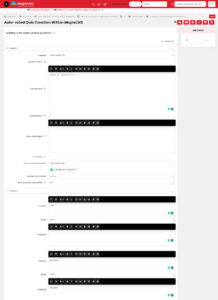
2. Notifications and Reminders
Getting users to finish their training is a major problem that L&D faces. Reaching out to your users is crucial when discussing statutory and required training. To promote course completion, LMS for healthcare training includes capabilities that let you send out emails and texts with reminders and notifications.

For instance, we at MapleLMS, as a healthcare training platform, provide SMTP notifications, reminders using network gateways for sending SMS and emails, push notifications in the LMS mobile app, and custom notifications called reminders that can be scheduled.
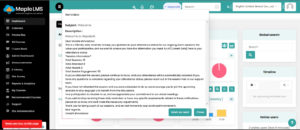
3. Updating Data
Providing L&D to thousands of users makes it challenging to maintain track of job titles, former employees, and recent hires.
The majority of the time that LMS administrators spend is cleansing data. So, reliable data connections are created from the LMS to HR tools and authority networks. This implies that, for instance, when a job role is changed, it can be updated in the LMS by the admin or instructor and then updated in ESR (electronic staff record).
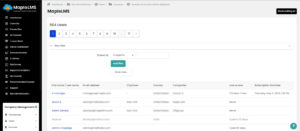
Additionally, if they move departments or advance up the ladder, the course they’re supposed to take can also be updated within the LMS. For instance in MapleLMS, the browse list of users (employees) can be accessed from the LMS directly from the site admin or a transcript report (user activity report) can also be downloaded.
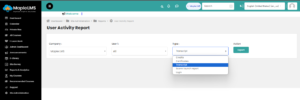
4. Compliance
Compliance in healthcare is a unique challenge. Less human labor will be required on your part because new users can be assigned to courses based on their data.
Additionally, you can obtain updated courses based on new rules and regulations from the content library within LMS that helps the healthcare staff stay up-to-date on compliance regularly.
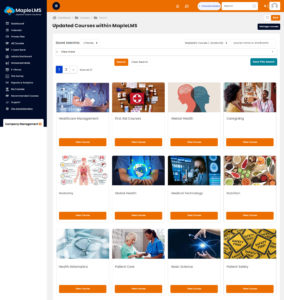
5. Onboarding
Healthcare staff employees who already have accounts on the websites can easily gain access to the LMS using the same login ID and password through the website itself. To complete their training; they don’t need to switch accounts or create any new accounts.
In certain circumstances, for sign-up through the website, learners have to wait until the admin approves their LMS account creation using their previous accounts.
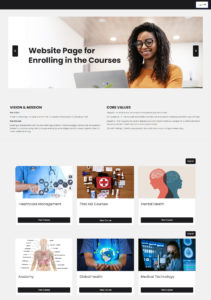
On the other hand, learners can also do manual enrollment or self-enrollment in the LMS systems for healthcare directly. Sometimes, external staff can also pay and enroll in the LMS.
Your learners’ data will be updated there if any certifications need to be created or updated. Duplicate training and data entry are greatly decreased as a result.

6. Assistance and Guidance
Not to be overlooked is support. far though LMS has excellent technology for the betterment of any staff. Healthcare staff employees can live chat with the instructors, ask questions on open forums, and even connect with the instructor through video using web conferencing tools integrated with the LMS system.
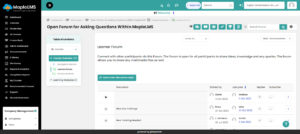
LMS provides healthcare staff’s development, support, and implementation of learning with professionals in learning and development. It implies that at every level of the training, healthcare employees have access to industry knowledge and insight.
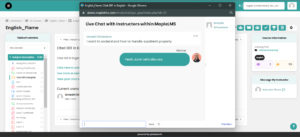
Conclusion
In conclusion, the solution to the major L&D difficulties in healthcare is to implement a Healthcare LMS within your healthcare company. A good LMS for healthcare can significantly impact issues with compliance, time restraints, well-being, and digital proficiency. Healthcare LMS software like MapleLMS changes the way we approach medical training by providing services like well-being assessments, reminders, updating data in ESR, compliance updations, effective onboarding, and knowledgeable support.
This ensures a better future for patients and healthcare employees alike. The unquestionable significance of healthcare LMS software in the current healthcare environment is highlighted by its expanding industrial value. Connect with our industry experts to learn more about how to resolve your healthcare organization’s challenges today!

